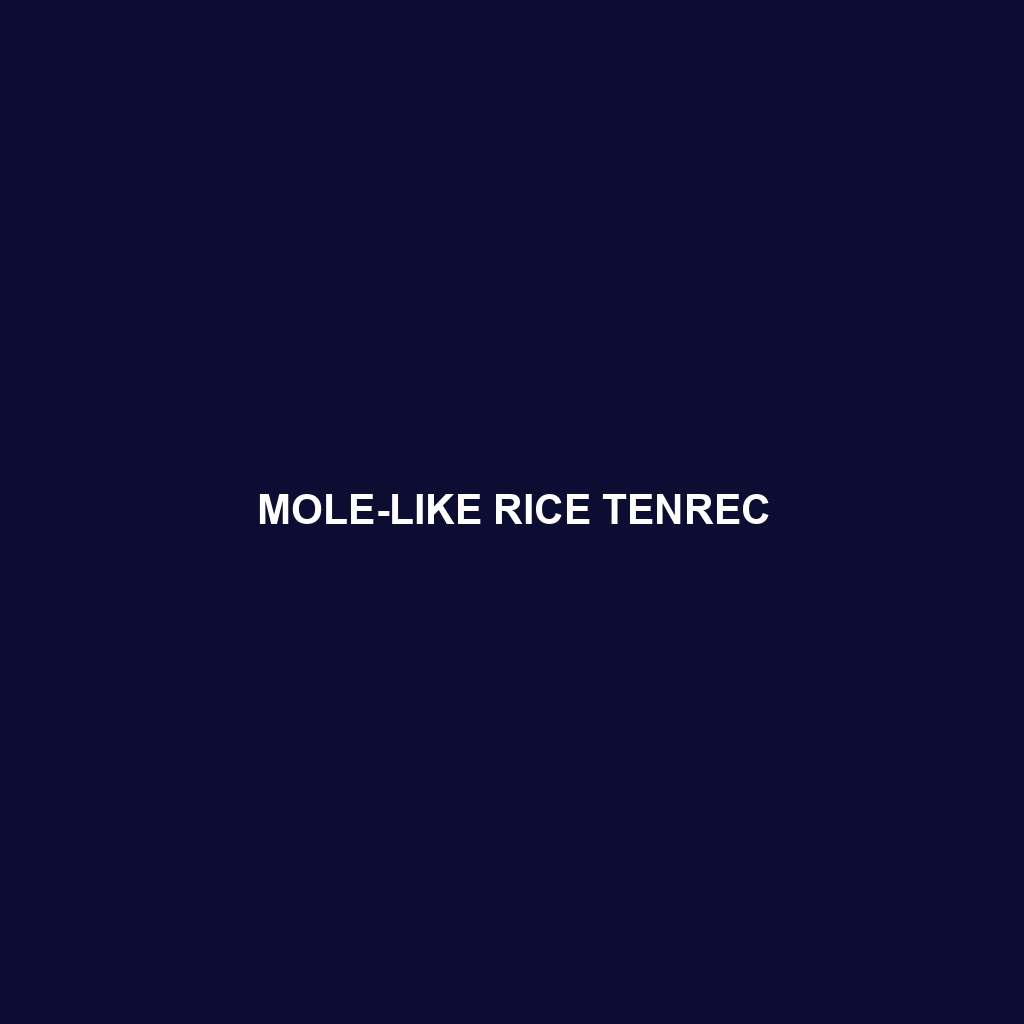Mole-like Rice Tenrec (Oryzoryctes hova)
:
The Mole-like Rice Tenrec is a fascinating small mammal native to Madagascar. Renowned for its subterranean lifestyle, this tenrec exhibits several unique adaptations that allow it to thrive underground. Known for its mole-like appearance and behavior, it is a remarkable example of convergent evolution in the animal kingdom.
Physical Characteristics:
Size: Mole-like Rice Tenrecs are small, with adults typically measuring about 4.5 to 6 inches (11 to 15 cm) in length. They have a robust body and short limbs.
Coloration: Their fur is generally a dark, slate-gray color, which helps them blend into the soil and detritus of their underground environment. The fur is dense and short, providing insulation and protection.
Special Features: They possess powerful, clawed forelimbs adapted for digging. Their eyes are small and covered by skin, as vision is less important for a subterranean existence. Additionally, they have sensitive whiskers that help them navigate and sense their surroundings in the dark tunnels.
Behavior:
Social Interactions: Mole-like Rice Tenrecs are primarily solitary animals. They spend much of their time digging and foraging alone. Interaction with other tenrecs usually occurs only during the breeding season.
Feeding Habits: They are insectivorous, feeding predominantly on earthworms, insects, and other small invertebrates they encounter while burrowing. Their keen sense of smell aids in locating prey underground.
Ecological Role: As burrowers, they play a significant role in soil aeration and nutrient mixing, which can benefit plant growth. They also help control insect populations.
Habitat:
Natural Habitat: Mole-like Rice Tenrecs are found in a variety of environments in Madagascar, from tropical rainforests to drier, more arid regions. They tend to favor areas with loose, moist soil that is easy to excavate.
Burrowing: Their primary habitat is underground, where they create extensive tunnel systems. These tunnels serve as protection from predators and harsh environmental conditions, as well as sites for foraging and nesting.
Adaptations:
Physical Adaptations: Their powerful forelimbs and claws are perfectly suited for digging. Reduced eyesight is compensated by enhanced tactile senses, such as sensitive whiskers and a keen sense of smell.
Behavioral Adaptations: To conserve energy, tenrecs exhibit a behavior known as torpor, a state of decreased physiological activity, during periods of food scarcity or extreme weather conditions.
Conservation Status:
Current Status: The conservation status of the Mole-like Rice Tenrec is not well-documented, primarily due to the challenges of studying such a secretive, subterranean animal. However, like many species in Madagascar, they may be threatened by habitat destruction and environmental changes.
Conservation Efforts: Efforts to preserve their natural habitats through sustainable land-use practices and protected areas are vital for their continued survival.
Fun Facts:
Convergent Evolution: Despite their resemblance to moles, Mole-like Rice Tenrecs are more closely related to other tenrecs and even elephants than to moles. This resemblance is an example of convergent evolution, where different species evolve similar traits independently.
Diverse Family: Tenrecs are incredibly diverse, with members ranging from aquatic to arboreal species, showcasing a wide array of ecological niches within the family Tenrecidae.
Sensory Whiskers: Their whiskers, or vibrissae, are so sensitive that they can detect the smallest movements in the soil, helping them locate prey with remarkable accuracy.
By understanding and appreciating the unique characteristics and ecological significance of the Mole-like Rice Tenrec, we can better advocate for their conservation and the preservation of the rich biodiversity of Madagascar.
